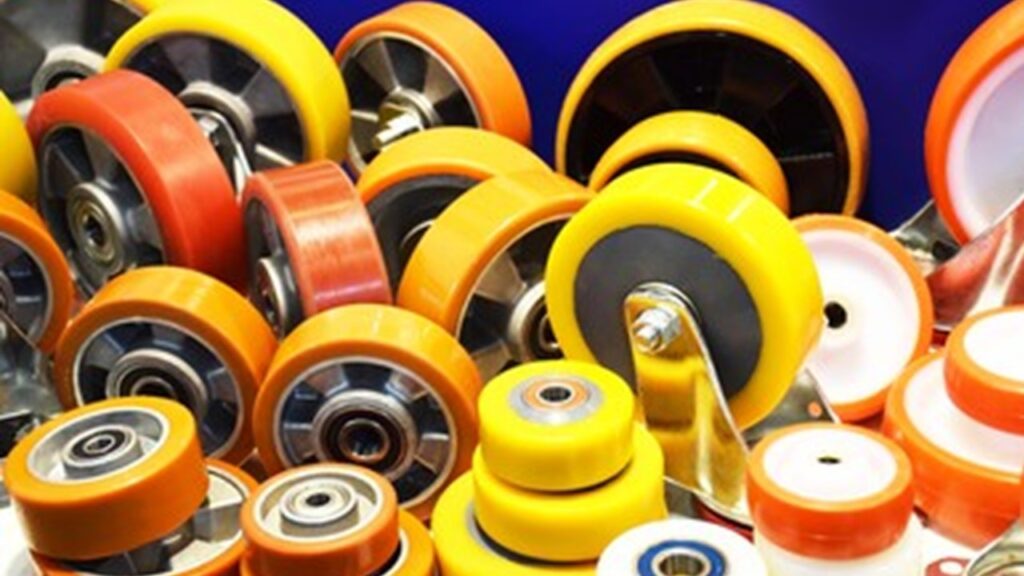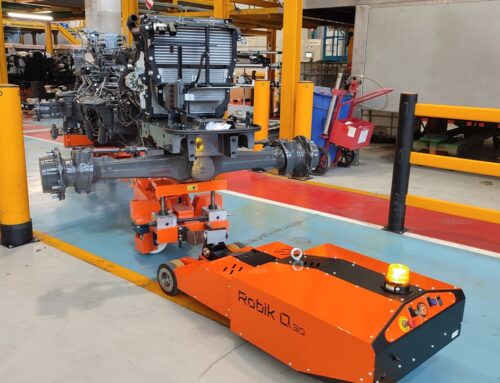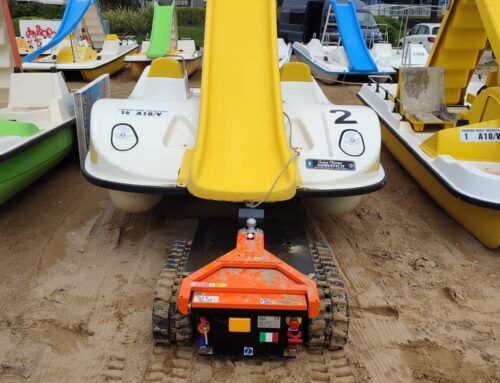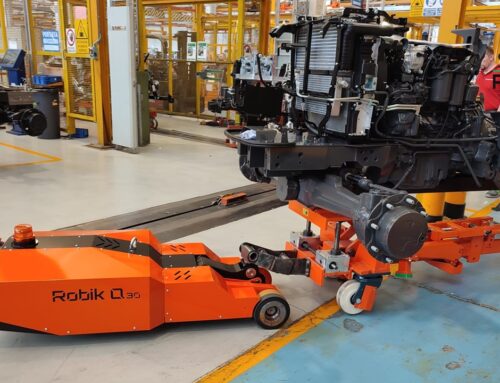
Polyurethane or super elastic? The guide to best configure your Robik Q based on the work environment
Robik Q and the importance of the correct configuration for optimal performance
When it comes to electric tugs like our Robik Q, attention is often focused on key parameters such as power, autonomy and maneuverability. However, there is an element as simple as it is decisive for the overall performance of the vehicle: the wheels.
Often overlooked, the choice of the type of wheel directly affects the safety, efficiency and durability of the vehicle, especially in complex and dynamic work environments.
One vehicle, two options: polyurethane or super elastic
The Robik Q can be equipped with two different types of wheels, each designed for specific operating conditions:
Polyurethane wheels
Ideal for indoor use on smooth, continuous and uneven floors – typically found in warehouses, production plants or indoor logistics.
Key features:
- Silent operation → perfect for closed or noise-sensitive environments
- High wear resistance → guarantee durability and reliability over time
- Excellent traction on regular and well-maintained surfaces
Ideal application: industrial warehouses, warehouse aisles, resin or smooth concrete floors.
Super elastic wheels
Designed for mixed or outdoor environments, where the surface may be uneven, with small obstacles, differences in level or less uniform surfaces.
Key features:
- High shock absorption → protection for loads and the structure of the vehicle
- Improved grip → greater safety on uneven or wet surfaces
- Greater versatility → perfect for dynamic production environments
Ideal application: loading/unloading areas, yards, transits between inside and outside.
Why the right wheel makes the difference
Choosing the right type of wheel is not just a technical detail, but a critical success factor. It affects:
- Operational performance: stability, fluidity and precision of movement
- Safety: reduced risk of slipping or impacts
- Personnel efficiency: fewer interruptions, greater productivity
- Vehicle durability: reduced wear, easier maintenance




